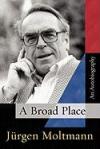We conclude our survey of Jewish Interpretation by looking at the Rabbinic methods employed in interpreting and applying scripture. At the outset we should note that in contrast to the apocalyptic orientation of the qumran community and the synthesizing tendencies of Philo and his disciples, the general motive behind Rabbinic exegesis was to protect the authority of the hebrew scriptures and to espouse their proper interpretation.
Rabbinic interpretation can be understood within two broad types: 1) Halakah and 2) Haggadah. The purpose of Halakah was to seek for principles and “rules of thumb” for behavior from legal portions of the scriptures. In contrast, Haggadah cast a wider net, attempting to encompass the whole hebrew corpus. This method primarily drew on narrative and proverbs to illuminate the meaning of texts (particularly dealing with the law) and to encourage readers. Thus rabbinic approaches focused on primarily ethical and pastoral readings of scripture.
Rabbinic interpretation introduced methods of study that would be appreciated by many Christians thousands of years later. By seeking to determine the meaning of words and phrases by cross-referencing within scripture itself, and by seeking the peshat, the plain sense, of the scriptures, these interpreters demonstrated an interpretive sense shared by many conservative approaches today. Both of these instincts, inner-scriptural exegesis and attending to scripture’s plain sense, would later be employed by 21st century evangelicals.
That said, rabbinic exegetes should not be understood as mere forerunners of conservative evangelical interpretation. Rabbinic exegesis remained heavily dependent on traditional understandings of given texts, and the practice of midrash, while revealing a commendable pastoral heart, at times easily degenerated into mere allegorical interpretation. Finally, it should be noted that the Qumran tendency to atomize the text, used to reinterpret scripture to suit that communities’ needs, was also present in rabbinic exegesis.
So as we end our brief exploration of Jewish interpretation, it is clear that a diverse group of interpreters existed whose respective approaches serve as archetypes of the same general orientations and concerns faced by interpreters today. The tension between literal and allegorical approaches to scripture, behind which lay clear disagreements regarding the role culture should play in biblical and theological reflection, are clearly seen here. Also, it is fascinating to note that the rejection of Philo’s approach by rabbinic interpreters did not save them from reading their agendas into the texts, while those who fully embraced their perceptions of current events as a grid for interpretation (the qumran community) were also guilty of seeing their own reflection in their readings. In this period we observe that having a canon within the canon was common (Rabbinic: Law of Moses, Qumran: Prophets). Thus the inevitable short-sightedness that comes with one’s unique situatedness is evident in Judaism, prior to Christian interpretation.
Klein, Blomberg, & Hubbard summarize these themes:
In sum, Judaism sought to relate its ancient scriptures to the realities of its contemporary experience. Rabbinic Judaism found in the application of the Mosaic Law a refuge to protect Jewish identity. Rather than resist outside influences, Hellenistic Judaism tried to accomodate its beliefs to those of platonic philosophy. And the ascetic Qumranians mined OT prophecies to explain their involvement in the events of their own day. In part drawing on this rich, complex stream of interpretation, and in part parallel to it, flowed a new interpretive current-Christian interpretation (28).
It remains to be seen in the course of this brief survey whether Christian interpretation really ever diverges from these fundamental tensions and concerns present in Jewish interpretation. As we end this first historical epoch, one thing is clear: one’s conception of the purpose of scripture plays a key role in interpretation. What exactly is scripture supposed to do? Until someone comes to terms with that question, they cannot properly interpret scripture. We will begin to examine different answers Christians have given regarding the function of scripture as we turn to the apostolic period (30-100 AD).










Pingback: The History of Biblical Interpretation: Jewish Interpretation « Stubbed Toes